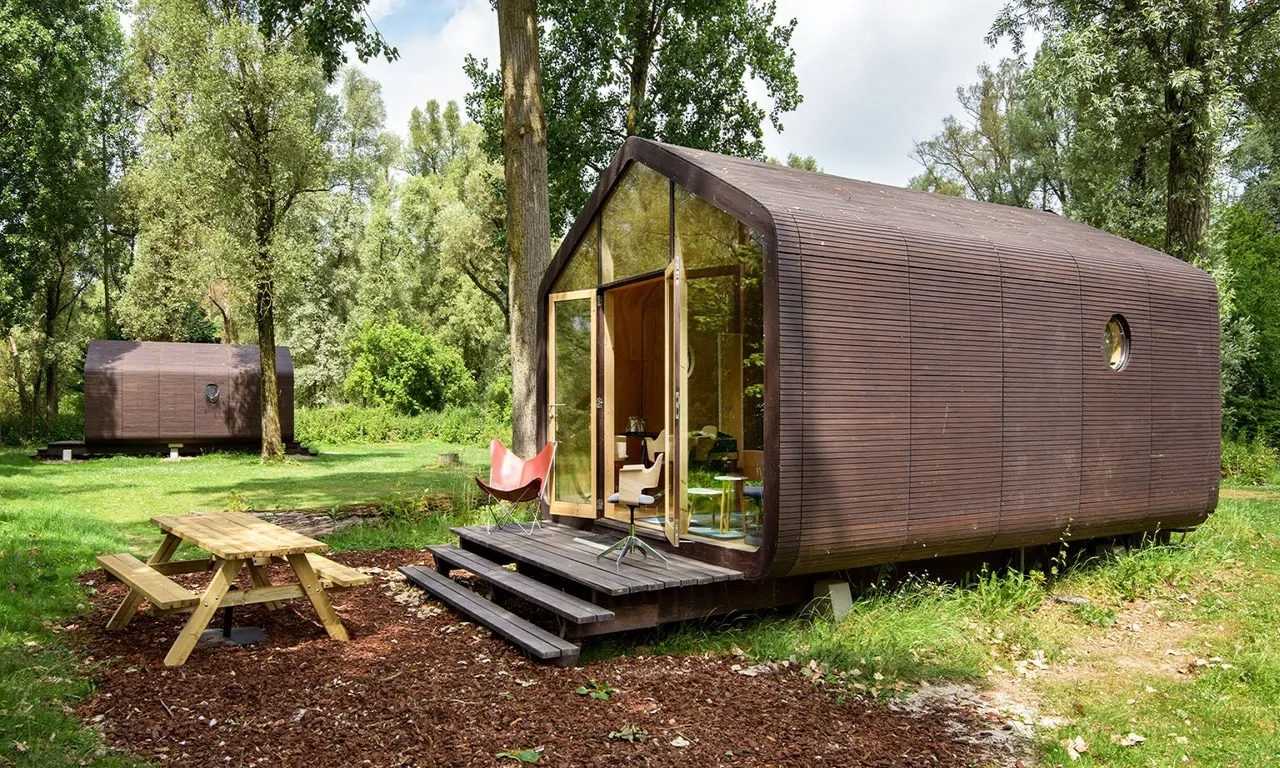Best Sustainable Tiny Homes in the World for Eco-Friendly, Downsize Living
Energy efficient, off-grid, and fun to live in!
Tiny homes have become a very popular housing option throughout the world. Many people want to downsize their dwellings and live in a more manageable space. There are two primary reasons for choosing a tiny home: one is to reduce carbon footprint and live sustainably, and the other is to declutter lives and adopt a minimalist lifestyle. Regardless of the reasons, tiny homes are sustainable and an eco-friendly option for downsizing living.
There are so many benefits of living in tiny homes. For instance, they are cheaper to buy or build compared to traditional homes and they use far less energy. Promoting green architecture, they are also easier to maintain, most of them are built with sustainable materials and support off-grid living.
Features of Sustainable Tiny Homes
Before we get into the whole topic of which tiny homes are the most sustainable in the world, let’s learn the key features of sustainable tiny homes:
- Use of energy-efficient LED lights
- Energy-efficient appliances
- Ventilation, materials and structural options to help regulate airflow and temperature to minimize the use of air-conditioning
- Use of solar panels to support off-grid living
- Rainwater harvesting systems and water catchments
- A composting toilet to deal with waste
- Gardening solutions to grow organic food and reduce the environmental footprint
- Use of recycled and recyclable materials for construction
Also Read: 10+ Types of Sustainable Homes for Lower Carbon Footprint
Best Sustainable Tiny Homes
Now that we know the elements that make a tiny home sustainable, let’s explore the best sustainable tiny homes in the world.
Wikkelhouse by Fiction Factory
Wikkelhouse is an innovative, modular and customized house made from cardboard and is designed to last 100 years. Designed and manufactured by Fiction Factory, an Amsterdam-based firm, Wikkelhouse roughly translates to ‘wrapped house.’ With a virgin fiber cardboard base, made from Scandinavian trees, Wikkelhouse features a robust sandwich structure through a patented technique that wraps 24 layers of cardboard around a house-shaped mold.
The layers are glued with eco-friendly glue and after each segment is wrapped, it is covered with a breathable and waterproof foil. The outermost paneling is made from stained pine wood, which shields the foil and cardboard from harmful sunlight. The flexible structure is created then with 1.2 meter deep segments that can be easily connected. One of the top sustainable tiny homes in the world, this tiny home reduces its emissions through the use of sustainable materials and eco-friendly design.

Image: Wikkelhouse
Hill House by Snegiri Architects
This tiny house has been built to fully integrate within the forest environment around existing trees with minimal environmental impact. This sustainable tiny home was built using natural materials and features a living plant roof and huge energy-saving windows. Dubbed Hill House, the tiny home also features plenty of smart house systems to conserve power.
A perfect example of a passive house, the building is equipped with a ventilation system with air recuperation, and energy-efficient windows and is winterized through a “foundation with cold-proof Swedish plate, carcass with a monolith, with cold-proof mineral wool covered with larix wood saturated in natural flax oil.”

Image: Snegiri Architects
Ohariu by First Light Studio and Build Tiny
Designed by First Light Studio and built by Build Tiny, Ohariu is a solar-powered and net-zero tiny dwelling. The 183-square-foot structure has a minimalist yet warm appearance and offers all the basic amenities for eco-living.
It is entirely powered by solar panels on the roof and has an LPG gas cylinder, LED lighting, low-water usage fittings and a composting toilet for off-grid living. To reduce the footprint, most materials used to construct this edifice are recyclable, low-maintenance, durable, and locally sourced.

Image: First Light Studio
Also Read: Climate-Responsive Architecture: Meaning, Significance and Examples
Adraga by Madeiguincho
Equipped with a variety of sustainable architectural elements including solar panels, a rainwater collection system, a dry toilet and composting garden beds, Adraga is an eco-friendly, off-grid tiny house created by Madeiguincho. It is an energy-efficient tiny home on wheels. Its exterior is made from unstained pinewood that lets it blend in with natural surroundings.
It has a rectangular, flat-roofed structure while the maker found light and airflow through windows and doors. The house has a farmhouse-style door, plenty of smart storage options, layout to optimize the available floor space.

Image: Madeiguincho
Planedennig by Baluchon
This tiny home on wheels was built by French tiny homemaker Baluchon for a mother and her son. Planedennig means ‘little planet’ in the Breton language. It features an exterior with a cedar finish and has a total length of only 6 feet. The multifunctional interior has a bath, dry toilets, a shavings compartment, and a large closet space.
There is no built-in off-grid technology, by the tiny home can be powered up by a standard RV-style hookup. However, the dwelling has plenty of windows to allow natural light in and is insulated with cotton, linen and hemp for the floors, the walls and the ceiling, making it energy-efficient.

Image: Baluchon
Echo by Redukt
Redukt Echo is a tiny home on wheels built by Poland-based manufacturer Redukt. It is a perfectly simplistic and energy-efficient design with a bright, open-plan layout that allows for off-grid living. Redukt Echo is an ideal dwelling on wheels for people who want to take cross-country road trips.
It is thermalized with oiled pine boards that offer a tidy and de-cluttered look to the structure. There are twin glass doors with heights almost going from floor to ceiling, merging the outdoors and indoors. The roof is topped off with galvanized metal sheets to endure all season. It is also outfitted with all the necessary elements for off-grid living.

Image: Redukt



1 thoughts on “Best Sustainable Tiny Homes in the World for Eco-Friendly, Downsize Living”